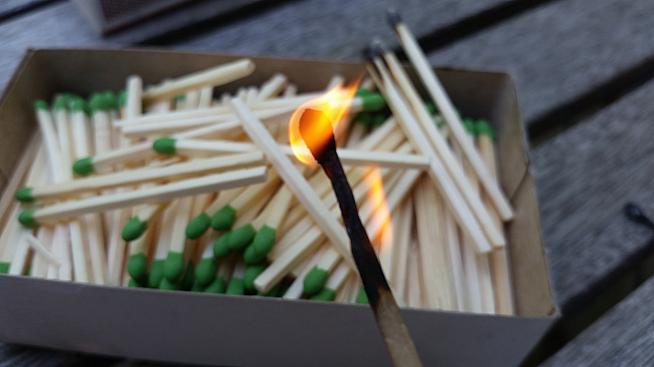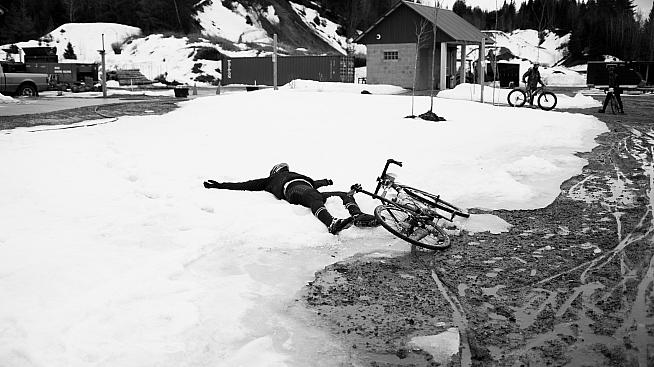You may have heard the term 'burning matches' when you have been out cycling with friends or in groups. Exclamations such as 'she burnt all her matches early on and could not hang on at the end'. But what does it mean to burn a match and how is that in any way useful when out riding?
Simply put to burn a match is just a way of saying that you did a hard effort. This may be up a climb or at the end of a time trial when you have pushed yourself to the limit.

For the riders I coach who want to win gold medals at top gran fondos or are doing triathlon, I teach them how to change their riding style to preserve their match box - riding smoothly with no sudden surges in power.
Physiologically we are all different. We recruit different types of muscle fibre depending on our genetics, level of fitness and what type of riding we happen to do. If you are riding for endurance you want to be using your slow-twitch muscle fibres as much as possible. These fibres are great at repetitive movements and are relatively resistant to fatigue. When we push hard on the pedals we recruit our fast- twitch muscles. Fast- twitch fibres are great at producing explosive power but they fatigue quickly and deteriorate with age. This is one reason that I work on increasing cadence with many of my athletes during the winter months. Higher cadence means that you are recruiting more slow-twitch muscles and hence have more endurance.

When you are riding your bike it's the same deal - the further you want to go the more efficiently you have to ride.
If you are racing then you will have to burn matches to stay with the group, close down attacks or compete for a sprint finish. Knowing how many matches you have to burn is therefore crucial in order to win because you don't want to burn them all too quickly and be left with an empty box in the closing stages of a race!
As a rider we want to understand the following
1. What constitutes a match for you?
2. How many matches do you have?
3. When is the right time to burn a match?
4. How do I increase the size of my matchbox?
In their book Training and Racing with Power Meter, Hunter Allen and Andrew Coggan define burning a match as an effort where 'one goes over threshold power by at least 20% and holds it there for at least a minute'. Clearly the longer you ride over threshold power or heart rate the faster you will burn your matches.
The following table can be used for determining a rough estimate of how much power you need to put down to burn a match over various time horizons.
1 minute - 120%+ of Threshold Power
5 minute - 115%-120% of Threshold Power
10 minute - 110%-115% of Threshold Power
20 minute - 100%-110% Threshold Power
If you want to test to see how many matches you have as an individual rider you could perform the following test:
Warm up: 10-20 min building to Z4 Threshold
Drills: 5 min hard effort (115-120% FTP or >105% threshold heart rate or 90-100% max heart rate). 5 min recovery
Repeat 5 mins hard, 5 mins recovery until you feel intensity significantly drop then cool down. Count how many 5 minute efforts you managed and that will be the size of your match box. Say you manage 3 efforts then you know that on a ride you can do three very hard one minute efforts, or three 20 minute threshold efforts before your match box is empty. This is not a precise science but having a rough idea of the size of your match box will enable you to plan your riding or racing in a far more strategic way.
Individual riders will burn matches at different rates depending on their physiology. For me I know that I burn fewer matches riding 20 minute efforts at threshold than I do by sprinting 1 minute efforts - they kill me off quickly which is why I suffer when the pace of riding keeps changing quickly.

Figure out what is holding you back and feed that back into your training. You don't get better by doing the things that you are already good at - you get better by understanding what limits your current performance and specifically training to improve it.
You know how big your match box is and you have have trained specifically to improve its size by focusing on your limiters. Next you need to know when is the right time to light a match. Think of a typical flat pro race. A breakaway forms, and is allowed to develop. With 30km to go the peloton start to get organised and the domestiques close it down and protect their sprinter. Last 2km the lead out riders take charge to make sure they get their sprinter into the right place to launch her attack. With 300m to go the sprinter kicks and charges for the line. For the domestiques the right time to burn matches is closing down the break, for the lead out riders it is with 2km to go, for the sprinters they want a full box to empty in the last 300m.
For those of you doing endurance events you need to understand the course and figure out when the right time is to burn a match. A road race with two big hills near the end would mean that you want to keep a few matches in the box. For those doing Ironman then you definitely want to keep your box full for the run.
This is all about being self aware and understanding the challenge ahead. Every time I do an event I get overtaken by groups of enthusiastic riders all gunning it from the start. A lot of the time I pass them on hill 3 or 4 as they limp home, match box empty with their tails between their (shaven) legs.
If you are interested in understanding what type of matches you have in your box and improving then don't hesitate to contact me for some more information.
Rob Wakefield is a fully qualified Level 3 Cycling Coach with the Association of British Cycling Coaches and founder of Propello, a cycling focused health and fitness business delivering Performance Training Programmes and Bespoke Coaching to cyclists anywhere in the world.
All cyclists who are looking to improve their speed, endurance or strength will benefit from a structured training programme. Propello Training will improve how your muscles, lungs and heart work and will enable your body to transport and utilise fuel effectively - making you faster and stronger for longer.
Click here to learn more about Propello.
0 Comments







